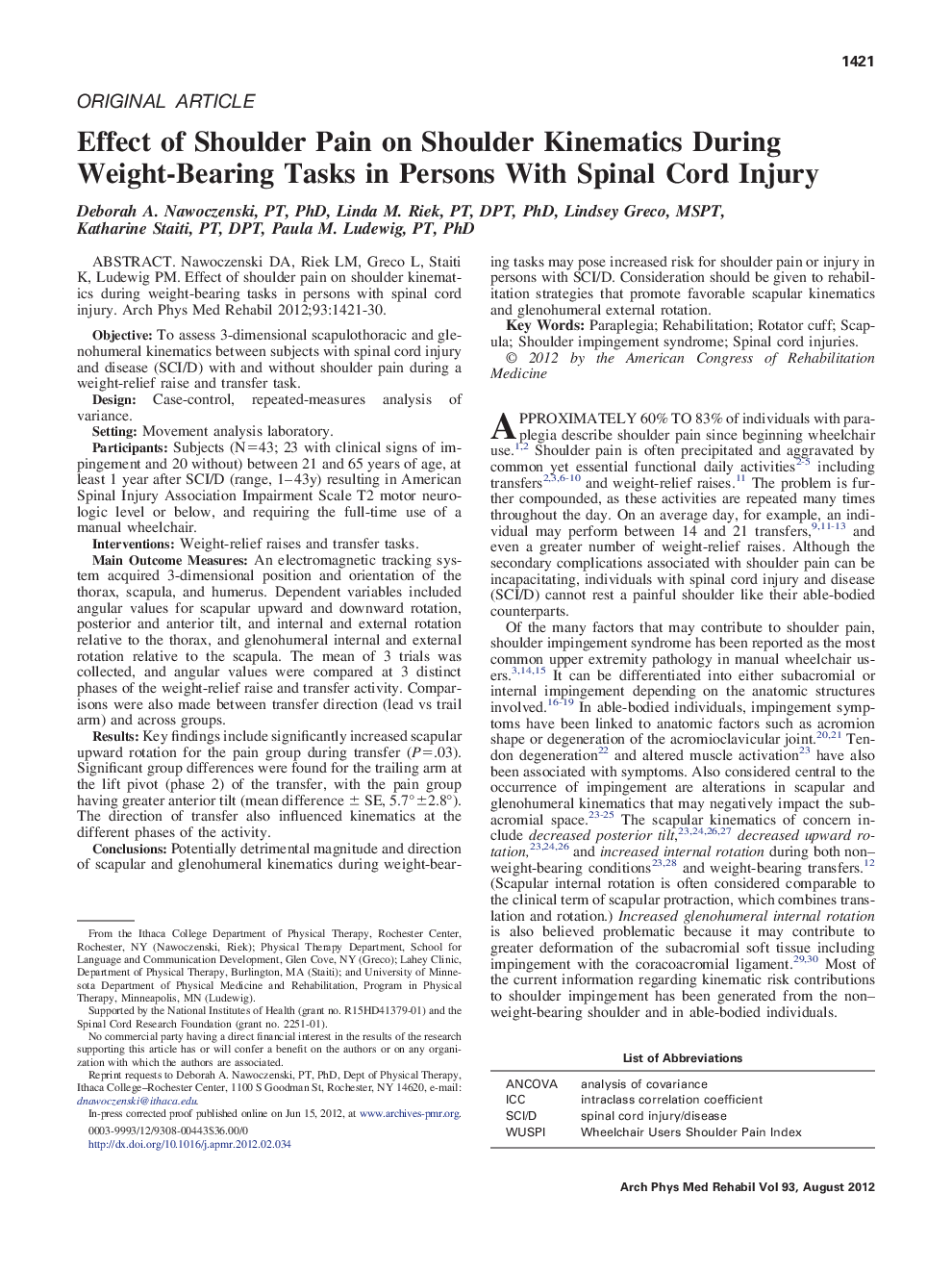| کد مقاله | کد نشریه | سال انتشار | مقاله انگلیسی | نسخه تمام متن |
|---|---|---|---|---|
| 3449567 | 1595722 | 2012 | 10 صفحه PDF | دانلود رایگان |

Nawoczenski DA, Riek LM, Greco L, Staiti K, Ludewig PM. Effect of shoulder pain on shoulder kinematics during weight-bearing tasks in persons with spinal cord injury.ObjectiveTo assess 3-dimensional scapulothoracic and glenohumeral kinematics between subjects with spinal cord injury and disease (SCI/D) with and without shoulder pain during a weight-relief raise and transfer task.DesignCase-control, repeated-measures analysis of variance.SettingMovement analysis laboratory.ParticipantsSubjects (N=43; 23 with clinical signs of impingement and 20 without) between 21 and 65 years of age, at least 1 year after SCI/D (range, 1–43y) resulting in American Spinal Injury Association Impairment Scale T2 motor neurologic level or below, and requiring the full-time use of a manual wheelchair.InterventionsWeight-relief raises and transfer tasks.Main Outcome MeasuresAn electromagnetic tracking system acquired 3-dimensional position and orientation of the thorax, scapula, and humerus. Dependent variables included angular values for scapular upward and downward rotation, posterior and anterior tilt, and internal and external rotation relative to the thorax, and glenohumeral internal and external rotation relative to the scapula. The mean of 3 trials was collected, and angular values were compared at 3 distinct phases of the weight-relief raise and transfer activity. Comparisons were also made between transfer direction (lead vs trail arm) and across groups.ResultsKey findings include significantly increased scapular upward rotation for the pain group during transfer (P=.03). Significant group differences were found for the trailing arm at the lift pivot (phase 2) of the transfer, with the pain group having greater anterior tilt (mean difference ± SE, 5.7°±2.8°). The direction of transfer also influenced kinematics at the different phases of the activity.ConclusionsPotentially detrimental magnitude and direction of scapular and glenohumeral kinematics during weight-bearing tasks may pose increased risk for shoulder pain or injury in persons with SCI/D. Consideration should be given to rehabilitation strategies that promote favorable scapular kinematics and glenohumeral external rotation.
Journal: Archives of Physical Medicine and Rehabilitation - Volume 93, Issue 8, August 2012, Pages 1421–1430